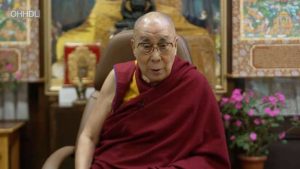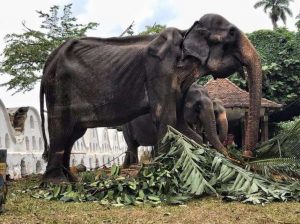
Tantric origins
In the early decades of the fourth century, tantric teachings exploded across the Indian subcontinent, erupting almost simultaneously in the eastern, southern, and northern regions of India. In Bihar, Kashmir, Oddiyana, the Deccan Plateau, Sri Lanka, and elsewhere, a mixture of Hindu and Mahayana Buddhist practitioners were magnetized by the outrageous, non-conformist values of the newly arisen tantras. Various yogis, ascetics, mendicants, Kapalikas, Kaula, Shaivites and assorted mahasiddhas became a crucible for this rapid path of inner transformation. As these new concepts and practices were codified in the Hindu tradition, Buddhist tantras soon followed and the Path of the Vajra or Secret Mantra journeyed to the lands of Nepal, Southeast Asia, China, and Japan. Although there were already long-established esoteric systems in ancient Mesopotamia, Egypt, Greece, and within Christianity, the form and process of tantra had no exact antecedent. Like every religious tradition, the origins were revelatory, its authority was based on a divine source, not only the accumulated literature or experience of its followers. The Indian (and later Tibetan) adepts who forged this tantric path received their marching orders directly from Wisdom Mind, a field of pure consciousness and luminosity that can only be described in symbology and analogy.
The wild bunch
The tantric upsurge may have been a revolt against a rigid caste system and highly stratified and repressive religion and politics. But its origins are more than a mere social backlash. Great yogis and yoginis appeared, downloading marvelous methods of deity visualization, mantra recitation, and physical yogic methods geared toward rapid transformation. Families and relationships of teacher-disciples arose, students gathered, teachings spread, lineages formed. As this developed and matured into highly complex systems, it resulted in ever-more-exacting sets of prescribed actions, rituals, and ways of practicing. Vast tantric teachings of Chakrasamvara, Hevajra, Yamantaka, and the like flourished, while the cult of Tara, Chenrezig, and other individual deities reached ever-wider audiences.
But wild yogis and yoginis, living non-conformist lifestyles in cemeteries, abandoning all social normalcy, and engaging in transgressive activities, were both shocking and horrifying to the religious aristocracy and to the faithful in general. We catch a glimpse of this tantric world through the stories of the early masters of tantra, the so-called 84 Mahasiddhas, whose exploits and inspiring stories tell of both an inner and often outer life that is far beyond the bounds of our mundane travails.
Is the Dharma like M&M’s?
When these matured systems reached Tibet from the eighth century onward, there was a simultaneous importation of all the monastic codes and rules of Buddhist India—many sharing an ancient Vedic or pre-Vedic framework. This wonderful migration presented a problem. There was a clash of two worlds—the wild, mystical, experiential, experimental tantric universe and the somber, ritualized, and highly conformed fortress of monastic life. Geoffrey Samuels describes this unlikely union in his scholarly and appropriately named book Civilized Shamans. In some ways it was, and still is, an uneasy alliance. On the other hand, it is a fact that when two strong forces occupy the same space, one will always dominate. In Tibet, the so-called crazy wisdom of tantra (a more accurate translation of TulShuk being yogic discipline) became a practical tool embedded in the highly stratified, codified, and dogmatic Dharma. This was a political, social, and ideological shell in which the unruly and un-socializable tantra could live and flourish. A hard chocolate shell with a soft and chewy interior. That extraordinary approach did work out—to a degree. Taming the spontaneous Wisdom Mind to fit into a lock-box is not easy for an individual, let alone a whole lineage or an entire religion. Still, the small gonpa or meditation retreat continued to exist, as did the non-monastic, non-celibate, ngakpa and ngakma fellowships, surviving outside “the system” in a family and village setting, or as solitary meditators. On a social scale their status was naturally far below the stratified ranks of monastic hierarchy, but they had a better opportunity to test their practice against the rigors of day-to-day living.
The dangerous Dharma
No matter its pedigree, from the very outset, tantra and Vajrayana were dangerous. It is anti-establishment at its core because it is not about career, marriage, a happy family, success, status, possessions, or anything else that mainstream culture (since its very beginnings) holds dear. While the ideal is to be “in the world but not of it” and to integrate with plain old vanilla life, along the way ordinary reality is fractured. Vajrayana demands an internal renunciation and a disassociation with mortal life, a turning away from all the ego-based machinations of society. If only for its own self-preservation, its transformational oddities were largely kept secret and reserved only for the initiates. Hidden away from the rest of the world, Tibet was the ideal land to be the repository for this knowledge. Like many ancient Asian nations, this feudal society was, in any case, based on rigid hierarchies, adhering to the strict rules of status and ritual. Externally, tantra was now tamed, and even cave-dwellers and crazy yogis were validated as part of the sacred landscape, not as iconoclastic world-destroyers who should be institutionalized.
Danger to society
Tantra was (and often still is) considered transgressive, illegitimate, and spurious by the Theravada sangha of India, Sri Lanka, Burma, and even by Chan and Zen practitioners of China and Japan, let alone the by European and Middle Eastern religious traditions. It certainly was a talking point for the atheist invasion of Tibet, or of missionaries in Mongolia and elsewhere. Yet in their own land, the ordained monks and nuns of secret tantra were now part of the mainstream cultural landscape. And even wandering ascetics became a tolerable class of outliers in Hindu India as well as in Buddhist countries. This is similar to the way that the West idolizes the rebel and iconoclast, but puts them on the reservation as crazy, transgressive artists. They are allowed to do what we cannot do (or don’t want to see) as a counterpoint to societies rules and moral standards.
The fact is that the transgression of the tantric seeker is of course far greater than that of the shenanigans of the avant-garde artist or musician. The artist may shock and challenge our moral, aesthetic, or cultural values. But the spiritual adept utterly destroys them. They are inherently a threat to society, unlike artists who are society’s entertainment, easily co-opted into the mainstream. The iconoclast becomes the media darling. The rebel becomes the celebrity.
Creating a core of awakened beings is destructive to the status quo, but a society based on organic, human, and spiritual values would be a far different world. We can only fantasize about a human community based on respect for all life, empowering of all individuals, abolishing status-based abuse—a government not based on control and manipulation of the populace, businesses not based on power and greed, and an overall seeking of harmony on a physical, psychological, and spiritual level. Although the Tantrayana is not a social movement (and in fact is notoriously not about social activism) by starting with the individual, an enlightened society would solve all the problems that well-meaning programs and institutions cannot. This is a terrifying prospect to ego-control-based individuals. So the business of wars, subjugation, and the amassing of wealth and power continues.

Dangerous to the Dharma
There are two scenarios in which the Dharma puts itself in danger and both are extensively taught and discussed. Firstly, by sharing the inner teachings with those who can’t comprehend their depth, there will be all kinds of misinterpretations. The symbols of multi-limbed wrathful deities, representations of sexual acts, and graphic or sometimes gruesome depictions can be taken literally, causing people to reject them outright or much worse. Secondly and equally dangerous is a mischaracterization so that the practice itself becomes distorted or hijacked to serve the individual’s own prejudices, wrong views, or neuroses in general. This is not rare.
The danger within
From the beginning, there are inherent dangers. Tantric Dharma itself was/is not for innovators or entrepreneurs, but suited to those who kept their samaya beyond all reproach, temptation, or compromise. Leaking this secret Mantrayana information to those not ready to receive would have all kinds of unwanted results. And deviating from the practice as written and taught was anathema. The same is true of the sacred arts, where every proportion is made according to canonical standards. The yogi may live in constant vigilant fear of overstepping established boundaries, to avoid have the “samaya gun” pointed at them (a term playfully used by early Western Vajrayanists). Strict outer conduct as a path to inner liberation is paradoxical. I have already spoken about this double-edged sword of freedom versus restraint in my previous article “Creative Dharma.”
On a deeper level still, what the Tantrayana might do to a stable (though dysfunctional) society is the same thing that it does to the inner landscape. It destroys the structures that make up the False Self, the narcissistic, self-seeking persona, the culturally molded and neurotic facade. More than a few things can go wrong when this nectar of illumination is poured into our muddied interior. Buddhist teachings talk about the four vessels that are “not fit for receiving the teachings.” A cup that is cracked does not retain the teachings: they merely leak out. The upside-down cup does not have any entry point, and the teachings are lost on it. The full cup merely overflows with its own fixed concepts and preconceptions and has no room for another perspective. And the poisoned cup has extreme views that immediately pervert or misconstrue the teachings. Fair enough. But this misses an even more pervasive psychological impediment.
Innermost danger
The outside viewer may not realize how terrifying the Vajrayana view and action can be for the seeker. While on paper “enlightenment” sounds good, the process of getting there entails having the internal rug continually pulled out from under one. False ideas, false narratives, false identities, self-inflated personality structures that were built carefully over decades, will be flattened. The danger is never the “stumbling blocks” that you can see lying out. It is the one you don’t see and that you are stumbling over. It is, by definition, invisible, unseen, and unavailable. After all, tantra can only start from the life in which we find ourselves. And so the fact is that people may enter the door of the Dharma for security and safety, a port in the storm of chaotic mundane life. Or they may seek to become “important” in their new spiritual identity, where their credentials are hard to check. One may be attracted to the comfort of dogma, structured teachings, a fatherly or motherly guru, standardization, conformity within a peer group. The real core of tantra is not so coddling, not the tepid bath that Trungpa Rinpoche warns about, the realm of spiritual materialism. The real Dharma will slap you in the face. For some this is terrifying and too close to home. The structure-breaking and open dimension of Tantra dissolves Dharmic constructs, not just mundane ones. If it exposes one’s rigidity and cocooning, it again becomes transgressive, the enemy, heretical.
When faced with such personal ego upheaval, the essence of the Dharma then seems like the enemy. We may want to kill the messenger and the message. Fear can cause one to push back to the point of slander, cancel culture, character assassination, and even violence against the ideas or people that represent the threat of awakening. Although this process of spiritual bypassing has been recognized for some time, the phenomena is widespread. Unfortunately various gurus, Dharma teachers, and centers can be facilitators of just this kind of group think, invested in the structure of their organization, the teachings, history, their own status—the status quo. The outer trappings of the Dharma then support the false ego-self, instead of challenging it.
This is the true and ever-present danger: the terror of luminous openness and what it means for our self-preserving False Self. Fortunately, there is a cure. But unfortunately there is only one. Self-awareness and self-observation is the perpetual necessity of a bonafide spiritual journey—or even a psychological one. With this as our ally, we can let the Dharma be a vehicle of liberation, instead of a bulwark against our own personal extinction.
Next month, I will discuss this hidden gem and how to it unearth it to reveal this luminous gift.
References
Dalton, J. P. 2011. The Taming of the Demons: Violence and Liberation in Tibetan Buddhism. New Haven: Yale University Press
Davidson, R. M. 2002. Indian Esoteric Buddhism: A Social History of the Tantric Movement. New York: Columbia University Press.
Linrothe, R. 1999. Ruthless Compassion: Wrathful Deities in Early Indo-Tibetan Esoteric Buddhist Art. Art Media Resources. Boston: Shambala.
Masters, R. A. 2010. Spiritual Bypassing: When Spirituality Disconnects Us from What Really Matters. Berkeley: North Atlantic Books.
Samuel, G. 1995. Civilized Shamans: Buddhism in Tibetan Societies. Cambridge: The Smithsonian.
Samuel, G. 2008. The Origins of Yoga and Tantra – Indic Religions to the Thirteenth Century. Cambridge: Cambridge University Press.
White, D. G. (Ed). 2000. Tantra in Practice. Princeton: Princeton University Press.
Wallis, C. D. 2013. Tantra Illuminated: The Philosophy, History and Practice of a Timeless Tradition.2nd Ed. San Rafael: Mattamayūra Press.
See more
Related features from Buddhistdoor Global
Creative Dharma
Poison Is Medicine: Paradox and Perception in Vajrayana Buddhism
A Journey Through the Guru’s Name Mantra












